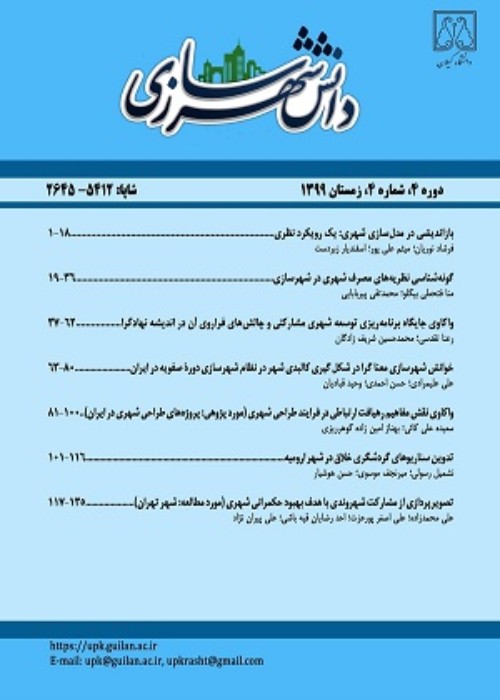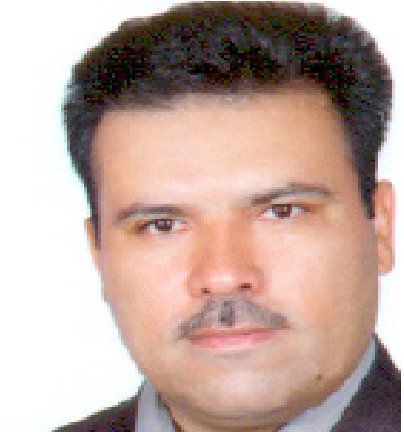Comparing the use of artificial intelligence with traditional methods in determining the vitality of urban spaces in Iran (case study, Mashhad city)
All managers and policymakers are seeking to design and equip urban spaces to ensure vitality in the city. However, the current condition of urban spaces shows that despite the efforts made, this goal has not been achieved, encouraging a lot of research in this field. The many studies conducted in this field could not meet the needs of this sector, causing an examination of the category of vitality through new methods. The current study aimed to determine the capabilities of traditional and modern methods in determining the vitality of urban spaces and compare them in connection with several streets of Mashhad.
This study used one modern and two traditional methods to evaluate the vitality of urban spaces. Concerning the traditional part, the common indicators for evaluating the vitality of urban spaces were initially given to 30 experts in this field to determine the condition of five selected streets in the designated areas. Field evaluations were conducted by 10 urban planners. CCTV cameras were also used in the image recording section for analysis with artificial intelligence. In this section, 20 stores with approximately 33 cameras entered the research. All street view images were analyzed using semantic segmentation models as color groups and pixels corresponding to each component. Finally, the findings were ranked and prioritized using the Analytical Hierarchy Process (AHP). Linear regression was used to determine the internal correlations of environmental variables affecting the vitality of urban spaces.
This study compared the capabilities of traditional models and artificial intelligence using Analytical Hierarchy Process (AHP) and questionnaire. Finally, the linear regression capability was used to detect the internal correlation of the variables affecting the vitality of the investigated spaces. The results showed that the overall classification accuracy of the model based on activity was 86.9% for five different classes (very bad, bad, acceptable, good, and very good). In this classification, the "good" subcategory got the lowest accuracy (66.4%), which was because of the small number of selected samples. To further assess the activity-based model with higher accuracy, a random sample of 200 images was evaluated based on field surveys in the study area. According to this study, the classification accuracy in this section was 84.1% in total.In general, wide streets and areas with mixed uses were in better conditions than others concerning spatial orientation, openness, and pleasantness of the environment. Specifically, Imam Khomeini Street attracted more passers-by because of its commercial complexes, shopping centers, National Garden, etc. The situation of commercial density in Janat Street and Imam Khomeini Street was of high quality, while its transparency was low, with coefficients of 0.192 and 0.226, respectively, in the analysis of data from cameras. Except for the National Garden and a small area of green space on Jannet Street, other streets did not have equipped parks, leading to respective values of 0.218 and 0.222 for the greenery ratio for these two streets. In the meantime, the activity was at a very high level in this sector.Considering the wide range and basic differences of units and independent variables, the raw data of environmental variables were primarily standardized. After preparing and grouping the raw data into high and medium categories at different times, it was found that the width of the street and commercial density were generally related to vitality and affected it differently. It was also revealed that transparency had a great impact on the vitality of the street and was positively correlated with it. Finally, the findings of the survey made it clear that openness, greenness, and commercial density all positively affected the increase in vitality. Linear regression was used to determine the effect of each variable on vitality, determining the average values of vitality for different times and selected sections. The fit coefficient (R2) calculated for this section was 0.798. To be more precise, these five variables could explain 79.8% of changes in vitality. This model was obtained as (F=182/77, P<001), indicating that at least one characteristic ofstreet width, greenness, openness, and transparency affected vitality.In the current study used different methods, including field evaluation, survey, and images and videos, and showed the width of the street as one of the main and effective variables on the volume and variety of activities in the street. Another finding of this study was that the transparency of buildings had a great role in the diversity and increase of pedestrian activity. However, the effect of this transparency was only until its value reached 70%. Increasing transparency beyond this figure did not have an additional effect on vitality. According to the results got in this survey, the effect of green space and openness on the vitality of the street was a negative correlation type, but this relationship was not completely linear.
This study found that openness affected the vitality of the street negatively and significantly. Compared to traditional methods, using images and videos prepared in the street was more suitable for big data, leading to more accuracy and less cost and time. In the meantime, the accuracy of traditional methods is much higher in limited environments but can be obtained at the cost of time and money. These conditions become more important when with the development of smart cities, there is no other choice but to use such methods to get data in the shortest time and in the highest volume. According to the result of this study, most of the studies related to the vitality of urban spaces have been conducted through traditional methods in Iran. As stated, these methods usually require more cost and time, which means they can be used in a small volume and sequence, necessitating the use of more effective methods and techniques.
- حق عضویت دریافتی صرف حمایت از نشریات عضو و نگهداری، تکمیل و توسعه مگیران میشود.
- پرداخت حق اشتراک و دانلود مقالات اجازه بازنشر آن در سایر رسانههای چاپی و دیجیتال را به کاربر نمیدهد.



